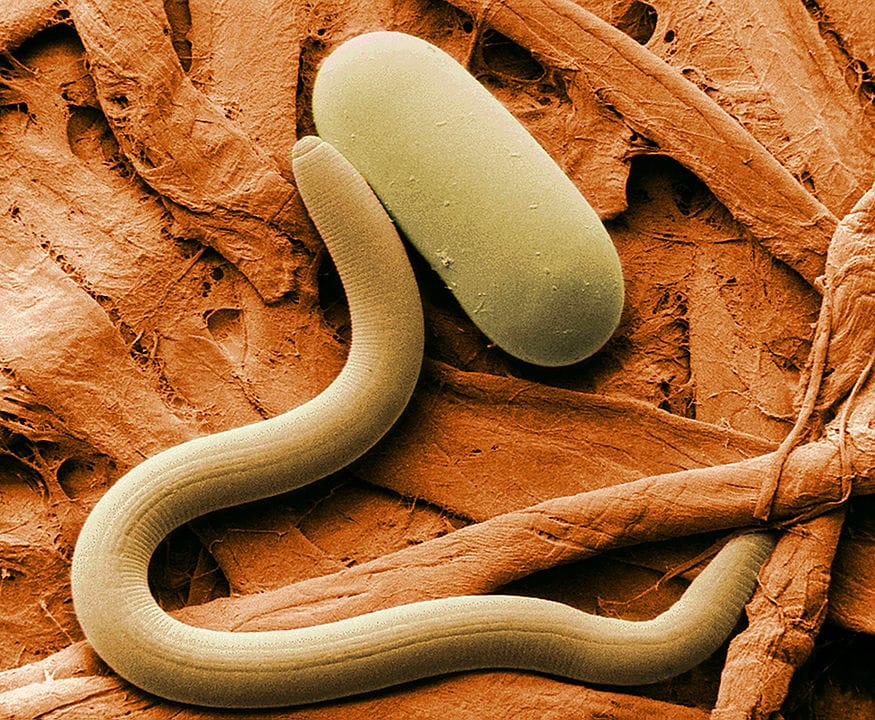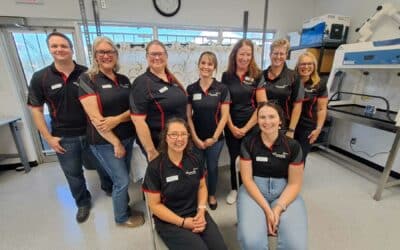Low-temperature scanning electron micrograph of soybean cyst nematode and its egg, magnified 1,000 times. Photo: USDA-ARS
My R&D team at 20/20 Seed Labs Inc. has been working on and off for the past eight years to develop a usable, working DNA-based test for soybean cyst nematode (SCN). This will be a key tool to monitor and combat spread of this pathogen which is prevalent throughout soybean growing areas of the United States.
It has a growing presence in Quebec and Ontario, and is now showing up in Manitoba, where it was first confirmed in 2019 and shown in July of this year to repeat in previously identified fields.
I’m happy to say these tests are now progressing to the pilot stage.
First, some history. SCN was deregulated in Canada in 2013 as it no longer fit the definition of a quarantine pest. The risk-based decision was made considering several factors, including the low risk of the pest, use of best management practices, and discrepancies in domestic and import regulations. Soil is a high risk factor for transmission and all soybean imports are required to be free of soil.
SCN, caused by the microscopic worm Heterodera glycines, feed on soybean plant roots forming recognizable small white lemon-shaped cysts. Their activity restricts the plant’s ability to take up nutrients and can reduce the number of nitrogen fixation nodules, and restricts the plant’s ability to take up nutrients. Openings in the root from the cysts also increase the chance of root rot, sudden death syndrome and seedling diseases.
With low level infections, plants can still appear to be healthy. Once above-ground symptoms of SCN are noticed, yield losses of up to 30 per cent can be expected.
If you test soil, you will find nematodes. Traditional Baermann funnel testing for SCN underestimates the amount of SCN presence by only isolating live, moving nematodes. Very careful microscopic work is needed to differentiate between unwanted SCN and highly desirable beneficial nematodes. So our initial intent in developing a new test was to increase the sensitivity of detection by capturing both living and dormant forms (eg. eggs and cysts), and to make it possible to specifically identify SCN across all of its life stages.
DNA-based testing has been a vital component to accomplishing both these goals. It also allows us to directly test plant roots to confirm SCN presence in tissues which is something that was only ever assumed before based on visible cyst presence.
We validated a DNA test quite early in our test development process that was able to identify SCN at very low quantities. The biggest challenge that has taken us the longest time to resolve has been reworking our soil extraction methods to work on larger amounts and a variety of mixed types.
Positive control test samples were surprisingly difficult to come by, but that’s probably a good thing for growers. I’m very grateful to the university and government nematode researchers that helped us out. Going forward, we anticipate the next challenge will be to link up the levels of SCN detected with potential yield loss.
Fall is approaching, and that’s the best time to take soil samples in the field. SCN numbers are highest when the plants are almost mature to shortly after harvest. Soil sampling is vital for monitoring SCN presence in your field.
As we’ve seen with countless other diseases, nobody should think they are immune from the potential damage caused by this pathogen. Once SCN is confirmed in a field, it can never be eradicated and spreads quickly. We must expect SCN to l work its way west, and testing is key to knowing where the pathogen is spreading to and how it can be kept at bay.
Related Articles
Seed Testing Critical to Ensuring Good Cereal Seed Performance in 2022
Research is Further Proving the Effectiveness of the Spornado
The Spornado Spore Catcher is a Valuable Weapon in Alberta’s Fusarium Fight






